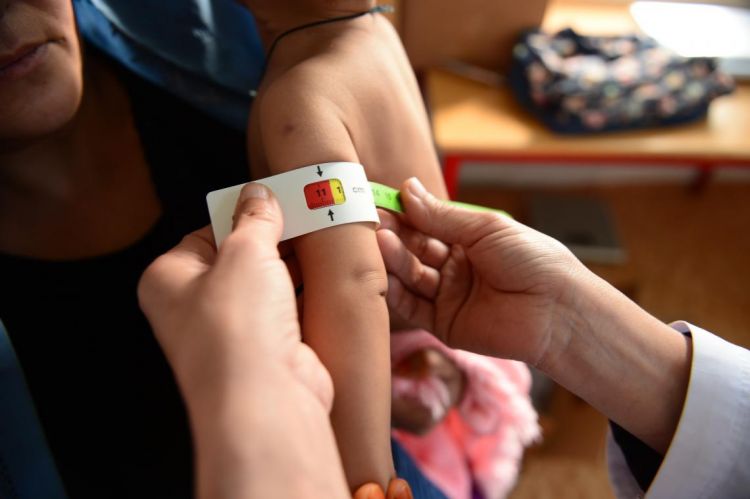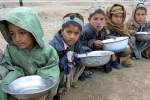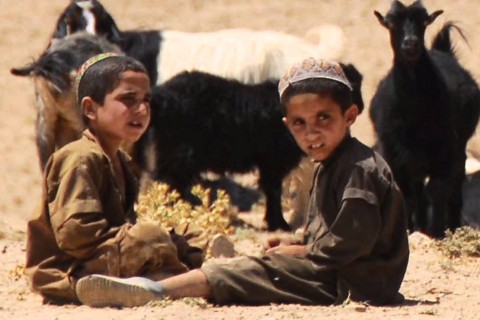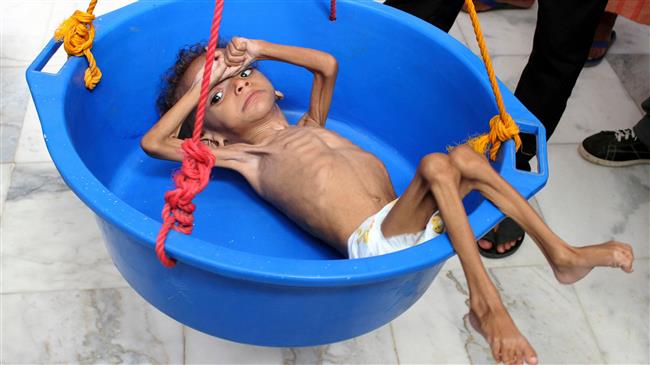As the Global Nutrition Cluster side event on Afghanistan is underway in Brussels, there is a clarion call for consolidated and sustained efforts to tackle undernutrition. Children in Afghanistan continue to bear the brunt of decades of protracted conflict. In 2019, an estimated 6.3 million people, including 3.8 million children, require some form of humanitarian assistance and protection, twice the number of the previous year.
Publish dateWednesday 3 July 2019 - 02:46
Story Code : 187706
“Proper nutrition during the first 1,000 days, from a mother’s pregnancy until a child’s second birthday is crucial to the wellbeing and development of any child,” says Sheema Sen Gupta, Acting Representative, UNICEF Afghanistan. “Unfortunately, many children are missing out on this due to poverty, food insecurity, conflict and lack of knowledge on proper feeding practices, resulting to hundreds of thousands of children suffering from acute malnutrition, and many others are suffering from its most severe form.” An analysis of nutrition surveys conducted across Afghanistan shows that 22 out of 34[1] provinces are currently above the emergency level threshold of acute malnutrition. In 2019, the overall estimated number of acutely malnourished under-five year old children is two million, an increase by 28 per cent in comparison with 2018.
Despite these challenges, Afghanistan has taken significant strides to advance child health and child nutrition. During the last 14 years, under-five mortality rate decreased from 69 deaths per 1,000 live births to 50 deaths per 1,000 live births. Under-five children being short for their age declined from 40 per cent in 2013 to 37 per cent in 2018. Afghanistan joined the Scaling up Nutrition Movement in October 2017 and has established the Afghanistan Food Security and Nutrition Agenda (AFSeN-A) – a multi sector platform to address malnutrition. In November 2018, AFSeN’s strategic plan was approved and in March 2019 the Ministry of Public Health, Public Nutrition Directorate launched its National Public Nutrition Strategy, showcasing political will and commitment by key institutions to improving the nutritional situation of every girl, boy and woman in the country.
Additionally, about 1300 Basic Primary Health Service (BPHS) facilities across Afghanistan provide treatment of acute malnutrition, an increase of about 35% as compared to 2016, using the human resource, facility, medication from the BPHS while the therapeutic and supplementary food products are provided by the UN agencies. As a result, there has been about 38% increase in the number of severely acutely malnourished children who received treatment in 2018 as compared to 2016. Acute malnutrition treatment services – for both severe and moderate cases - were provided, with about 30% reduced cost as a result of the collaboration. “The opportunities in delivering actions towards demonstrating change in the nutritional situation within the humanitarian-development-peace continuum are tremendous. FAO, UNICEF, WHO and WFP as part of the One UN for nutrition – work in close coordination in support of government towards tackling undernutrition. A study conducted specific to Afghanistan by the World Bank in 2018 reported that for every USD 1 dollar invested in nutrition 13USD are returned in economic gains. With increased investments in nutrition, more change can be achieved.” Dr. Said Shamsul Islam, Coordinator for the Technical Secretariat of AFSeN agenda.
“This year, as the world is commemorating the 30th anniversary of the Convention on the Rights of the Child, we are reminded of our collective obligations to once again position and invest in realizing the rights of every girl and boy in Afghanistan to survival and growth,” adds Sen Gupta. “Consolidating the gains made and taking them to scale to reach every child must be our mantra. If we are to tackle and reverse this unfortunate trend as we must take action together and now.”
Despite these challenges, Afghanistan has taken significant strides to advance child health and child nutrition. During the last 14 years, under-five mortality rate decreased from 69 deaths per 1,000 live births to 50 deaths per 1,000 live births. Under-five children being short for their age declined from 40 per cent in 2013 to 37 per cent in 2018. Afghanistan joined the Scaling up Nutrition Movement in October 2017 and has established the Afghanistan Food Security and Nutrition Agenda (AFSeN-A) – a multi sector platform to address malnutrition. In November 2018, AFSeN’s strategic plan was approved and in March 2019 the Ministry of Public Health, Public Nutrition Directorate launched its National Public Nutrition Strategy, showcasing political will and commitment by key institutions to improving the nutritional situation of every girl, boy and woman in the country.
Additionally, about 1300 Basic Primary Health Service (BPHS) facilities across Afghanistan provide treatment of acute malnutrition, an increase of about 35% as compared to 2016, using the human resource, facility, medication from the BPHS while the therapeutic and supplementary food products are provided by the UN agencies. As a result, there has been about 38% increase in the number of severely acutely malnourished children who received treatment in 2018 as compared to 2016. Acute malnutrition treatment services – for both severe and moderate cases - were provided, with about 30% reduced cost as a result of the collaboration. “The opportunities in delivering actions towards demonstrating change in the nutritional situation within the humanitarian-development-peace continuum are tremendous. FAO, UNICEF, WHO and WFP as part of the One UN for nutrition – work in close coordination in support of government towards tackling undernutrition. A study conducted specific to Afghanistan by the World Bank in 2018 reported that for every USD 1 dollar invested in nutrition 13USD are returned in economic gains. With increased investments in nutrition, more change can be achieved.” Dr. Said Shamsul Islam, Coordinator for the Technical Secretariat of AFSeN agenda.
“This year, as the world is commemorating the 30th anniversary of the Convention on the Rights of the Child, we are reminded of our collective obligations to once again position and invest in realizing the rights of every girl and boy in Afghanistan to survival and growth,” adds Sen Gupta. “Consolidating the gains made and taking them to scale to reach every child must be our mantra. If we are to tackle and reverse this unfortunate trend as we must take action together and now.”
avapress.com/vdciuyazqt1avy2.ilct.html
Tags
Top hits












